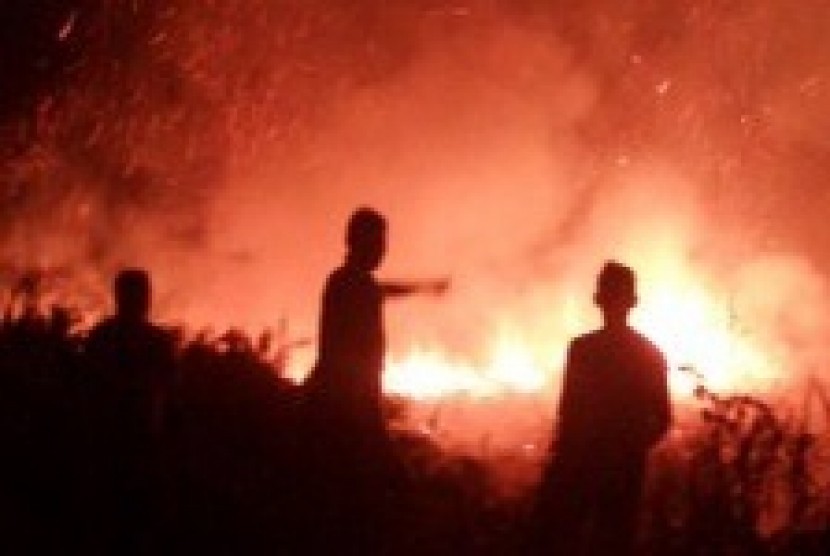REPUBLIKA.CO.ID, PALANGKARAYA - NOAA-18 Satellite has detected 319 hotspots of forest and plantation fires across Central Kalimantan Province on September 14.
"319 hotspots had been detected in all districts in Central Kalimantan Province, and the largest number was detected in East Kotawaringin, namely 80," Mochtar, head of the Central Kalimantan disaster mitigation agency, reported on Monday.
Hotspots had also been found in Katingan, West Kotawaringin (31), Sukamara (26), Seruyan (25), Kapuas (23), Palangka Raya (22), Pulang Pisau (17), Lamdau (13), Gunung Emas (7), Murung Raya (5), South Barito (3), North Barito (3), and East Barito (3). During September 1-14, 2014, a total of 972 hotspots had been detected in the province, a significant increase from that in August 2014, Mochtar noted.
Local authorities with the help of local community have been trying to extinguish the fires. Mochtar called on local farmers to stop burning forest areas for farming or plantation.
The recent drought, which has hit some parts of Indonesia, has triggered the spreading of hotspots in 15 provinces across the country. The 15 provinces affected by hotspots include East, West, South, Central, and North Kalimantan; North, South, Central, and South Sumatra; East Java; Riau; Aceh; Lampung; and Bali, according to Sutopo Purwo Nugroho, a spokesman of the National Disaster Mitigation Agency.
In Seruyan District, Central Kalimantan, at least 47 hotspots were detected in eight subdistricts during August and early September 2014. Hotspots from forest and plantation fires were discovered by the NOAA-18 Satellite, Suwarto of the Seruyan forestry service said recently.
The hotspots were caused by land clearance conducted by local farmers to open new plantation and farming areas, he noted. They usually cleared forest areas during the dry season and converted them into farming or plantation areas, he added.


